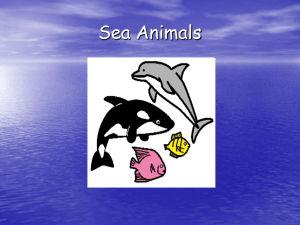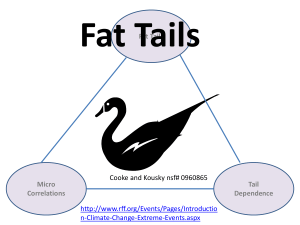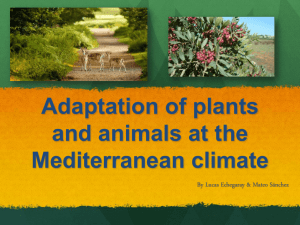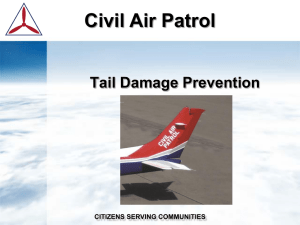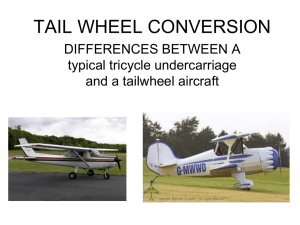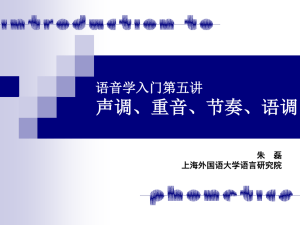fluctuation approach to assessment of the reliability
advertisement
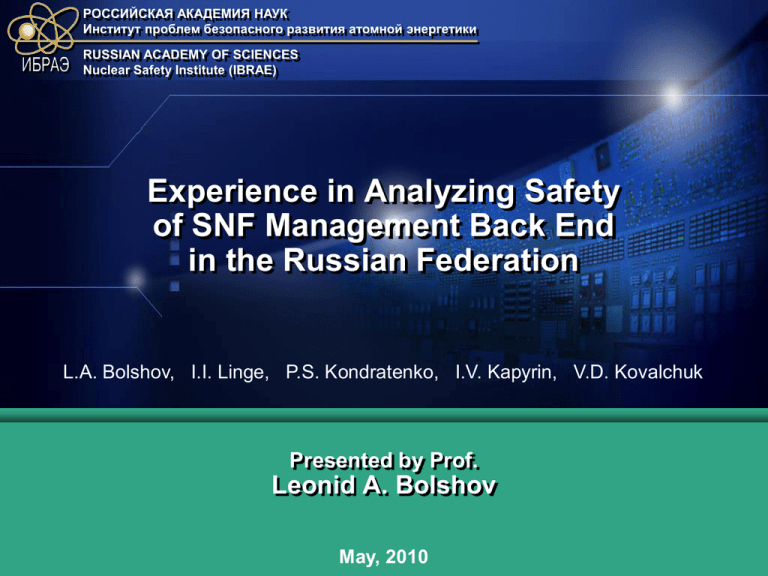
РОССИЙСКАЯ АКАДЕМИЯ НАУК Институт проблем безопасного развития атомной энергетики RUSSIAN ACADEMY OF SCIENCES Nuclear Safety Institute (IBRAE) Experience in Analyzing Safety of SNF Management Back End in the Russian Federation L.A. Bolshov, I.I. Linge, P.S. Kondratenko, I.V. Kapyrin, V.D. Kovalchuk Presented by Prof. Leonid A. Bolshov May, 2010 Outline Motivation Experience in groundwater flow and transport modeling Non-classical transport processes in geologic media: Basic physical models Main factors determining anomalous transport in fractured media 1. Transport in random advection model 2. Random advection with finite correlation length 3. Contaminant transport over percolation media 4. Fluctuation aspects in transport over highly disordered media Conclusions 2 www.ibrae.ac.ru Motivation Nuclear energy development program: – till 2015 – 234 bln. kWh/year (2009 – 163 bln. kWh/year) – after 2015 г. – annual grow of nuclear power not less than 2GWt. Program «New generation nuclear energy techlogies (2010-2020)» – Innovative technologies for the conversion to closed SNF cycle – New generation fast power reactors Program “Nuclear and radiation safety” (2008-2015) – Creation of an underground lab for SNF and HLW storage – Safe disposal of high level waste requires the solution of complex scientific problems 3 www.ibrae.ac.ru SNF management in the Russian Federation PWR-440, FR BilNPP PWR-1000 Remains at the Bilibino NPP LWGR-1000 HOT-1 SNF SNF SNF SNF Комплекс разделки (SNF reprocessing) RT-1 ODC HOT-2 GKhK 4 PA «Mayak» ( SNF storage at GKhK) www.ibrae.ac.ru Plans of IBRAE for groundwater flow and transport modeling 1. Formalization of the process for constructing hydrogeological models and making calculations of safety parameters 2. Proper understanding of the underlying physical processes – non-classical models 3. Systematization of existing knowledge and software for continuum porous media models (clay, sand) 4. Development of the software for fractured media 5. Cooperation with institutions having experience of work at specific facilities 5 www.ibrae.ac.ru Numerical modeling: model types – Dimension: 1D, 2D, 3D. – Media representation Continuum porous media 6 Discrete fracture network www.ibrae.ac.ru Model in development : PA “Mayak” groundwater flow Hydrogeological tasks: Possible reservoirs overflow (accumulated 413 mln m3 of liquid waste). Dangerous rise of levels observed during the years of high precipitation (2000-2003). Transport of radionuclides from Karachai lake (120 mln Ci accumulated radioactivity). Drainage of polluted waters into the surrounding channels. Plenty of other near-surface RW storages. 7 www.ibrae.ac.ru Kirovo-Chepetsk chemical combine Groundwater flow model using ModFlow Radionuclide transport model (MT3DMS) 8 www.ibrae.ac.ru Experience in 3D: prospective SNF repository in France (test case) – Repository in clay – Heterogeneity (~1010) and anisotropy (~102) in the permeability tensor – Layer pinch-outs – Small thickness of the domain w.r. to diameter – Full heterogeneous (~105) diffusion-dispersion tensor. 9 www.ibrae.ac.ru Modeling results: pressure and migration 3D view 10 Vertical cross-section Horizontal cross-section www.ibrae.ac.ru Current problems: Laboratory in granite rock massif with possible SNF repository Fractured media model 11 www.ibrae.ac.ru Non-classical transport processes: Key factors and physical concepts Key physical factors determining anomalous transport in fractured media 1. Natural fracture networks exhibit fractal properties and can be classified as percolation media 2. Random advection as dominating transport mechanism 3. Sharp contrast in medium characteristic distribution 4. Strong spatial fluctuations of moisture seepage characteristics Concepts 1. Critical phenomena theory 2. Feynmann’s diagram techniques 3. Mesoscopic effects in semiconducting tunneling barriers 12 www.ibrae.ac.ru Non-classical transport processes: 1. Transport in Random Advection Model Statement of the problem c vc 0; t v 0; vi r1 vk r2 V 2 a / r1 r2 at 2h r1 r2 a Results h>1: classical diffusion h<1: super-diffusion, exponential decay in concentration tail No heavy tails 13 Various concentration asymptotics at large distances (tails) www.ibrae.ac.ru Non-classical transport processes: 2. Random Advection with Finite Correlation Length Kik r1 r2 v'i r1 v'k r2 V 2 a / r1 r2 Statement of the problem v r u v ' r , u is drift velocity at a r1 r2 , R t c r, t c 0, t 2h is correlation length Classical Gaussian tail Super diffusion Classical diffusion Super diffusive tail t Change of transport regimes with time (schematic) 14 r Two-stage concentration tail (schematic) www.ibrae.ac.ru Non-classical transport processes: 3. Contaminant Transport in Percolation Media Statement of the problem Governing equation: c r , t t dt t t c r , t Dc r , t , t t t 1 , 0 1; t 2/ Results R t c r, t c 0, t Classical diffusion Sub diffusion Sub diffusive tail t Transport regimes above the percolation threshold (schematic) 15 Classical Gaussian tail r Two-stage concentration tail above percolation threshold (schematic) www.ibrae.ac.ru Non-classical transport processes: 4. Fluctuation Aspects (cont’d) Statement of the problem F N S1 C S Results Large area of Strong renormalization of the contaminant source power (factor K) Large area of the contact surface between medium and contaminant source: K 1 S Small area: Strong renormalization K 1 CS contaminant source 16 N near-field zone F far-field zone Large statistical scatter of the K- factor K K 2 / K 1 www.ibrae.ac.ru Conclusions Either closed SNF cycle or final direct SNF disposal require safety assessment techniques Numerical groundwater flow and radionuclide transport models are regarded as the main tool in the safery assessment. Their development is considered as one of the key goals Four physical models presented above manifest main feature of geological media giving rise to nonclassical contaminant transport. The contaminant concentration at large distances (in tail) decays exponentially in both super- and sub-diffusive transport modes. Spatial fluctuations of medium properties can lead to a significant renormalization of contaminant source power 17 www.ibrae.ac.ru РОССИЙСКАЯ АКАДЕМИЯ НАУК Институт проблем безопасного развития атомной энергетики RUSSIAN ACADEMY OF SCIENCES Nuclear Safety Institute (IBRAE) THANK YOU FOR YOUR ATTENTION


